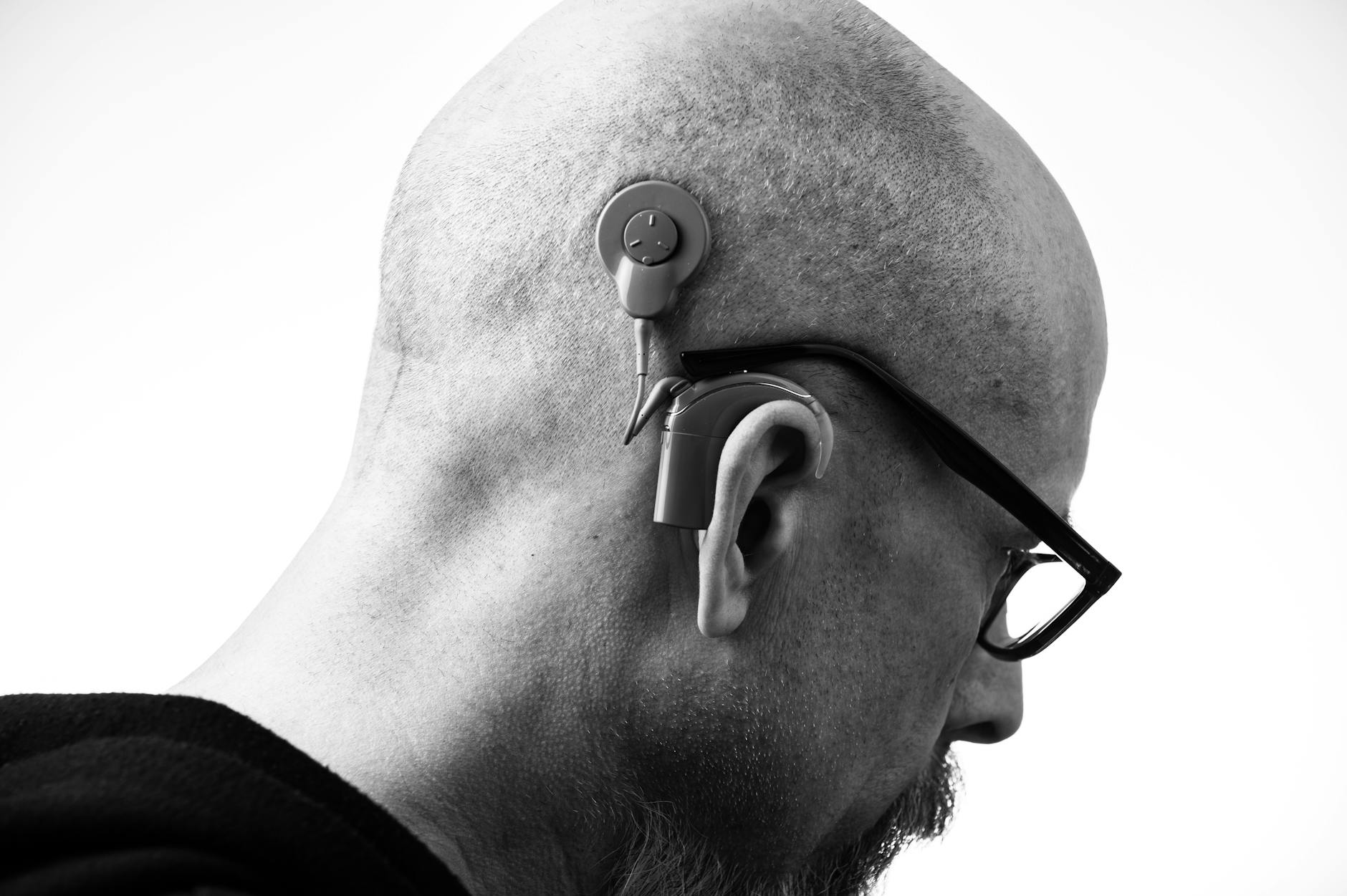Your hearing aids help you catch conversations—but if your own voice sounds like it’s echoing in a barrel, they can be hard to wear. That boomy, "too loud in my head" sensation is common and fixable. Here’s what causes it, how to tell what’s really going on, and the exact adjustments that make your voice sound like you again.
Why Your Voice Sounds "Boomy": The Occlusion Effect
When you speak, chew, or walk, sound doesn’t only come through the air. Vibrations travel through your skull (bone conduction) and reach your ear canal from the inside. If your ear canal is blocked—even partially—those low-frequency vibrations can’t escape. They bounce around and amplify, making your voice feel too loud, hollow, or "stuck" in your head. That’s the occlusion effect.
Typical clues:
- Your voice, chewing, and footsteps sound louder than normal.
- It’s worst in quiet rooms and improves in busy environments.
- It happens more with closed or snug fits (like power domes or custom molds) and less with very open fits.
Not all “boomy voice” comes from occlusion. Too much low-frequency amplification (how the hearing aid is programmed) can also make your voice feel bass-heavy. The good news: both causes are manageable with fit and settings.
Is It Occlusion—or Just Too Much Bass? Quick At-Home Clues
These simple checks can help you and your audiologist pinpoint the cause:
- The hum test: Say "mmmmm" or hum a low note. If your voice suddenly feels much louder with the hearing aid in your ear compared to out, occlusion is likely part of the problem.
- The finger test: With the hearing aid out, gently place your finger in your ear canal and talk. If you get the same boomy sensation, that’s classic occlusion from blockage.
- Program change test: If your hearing aids have multiple programs, switch to one labeled "Music" or "Speech in Noise." If your voice changes noticeably between programs, programming (low-frequency gain) may be a major factor.
Share your impressions with your audiologist. These specifics guide fast, targeted fixes.
Fix It With Fit First: Hardware Changes That Help
Because occlusion is about trapped vibration, anything that opens or lengthens the sound path—or positions the tip deeper in the bony part of the canal—can reduce it. Ask your audiologist about these options:
1) Venting: Let Your Voice Out
- More open domes: If your low-frequency hearing is near-normal, switching from closed to vented/open domes reduces occlusion dramatically.
- Larger or additional vents in custom earmolds: Bigger vents let more of your own voice escape. Your audiologist can “tune” vents by diameter for the best balance of comfort, feedback control, and sound quality.
- Pressure-equalization vents: Even small vents can relieve the “plugged” sensation and improve your own voice comfort.
Note: Bigger vents can increase feedback risk in some ears. Careful fitting and feedback management software typically control this.
2) Go Deeper: Slim Tips or Deep-Canal Molds
Much of the occlusion effect happens in the soft, cartilaginous part of the canal. If the eartip sits past that zone—deeper into the bony portion—occlusion drops. Options include:
- Slim tips or deep-insertion molds designed to sit farther into the canal.
- Canal length adjustments on custom molds to hit the “sweet spot” without pressure.
Deep fits require skilled impressions and precise manufacturing. Comfort should never be sacrificed—ask for a careful try-in and minor remakes if needed.
3) Material and Shape: Make Movement Your Friend
- Material choice: Some ears do better with firm acrylic (stable shape) while others prefer soft silicone (flexes with jaw movement). Your jaw and canal anatomy matter.
- Jaw-friendly shapes: Skeleton or canal-lock designs can reduce motion and gaps that cause feedback—letting you use more venting without squeal.
Expect a little trial-and-error; a good clinic will remake or modify molds when needed, especially within your trial period.
Program It Smarter: Software Fixes That Work
If fit changes aren’t enough—or you need a closed fit for low-frequency hearing loss—programming can restore a natural voice.
1) Reduce Low-Frequency Gain (Strategically)
- Own-voice tuning: Your audiologist can lower bass amplification when you speak without compromising understanding of others. Some systems detect your voice and apply brief, targeted adjustments.
- Dedicated “Own Voice Comfort” program: A quiet-room program with slightly reduced low-frequency gain often feels more natural for calls, meetings, and one-on-ones.
Lowering too much bass can make other people sound thin. The art is in balancing clarity for external speech with comfort for your own voice.
2) Use Manufacturer Features for Occlusion
Modern devices may include:
- Own-voice detection/processing: The aid recognizes your voice characteristics and instantly adjusts.
- Occlusion managers: Algorithms that reduce internal boominess, especially during your speech onset sounds (like “b,” “m,” “p”).
- Feedback managers: Better feedback control lets you keep vents larger—which directly reduces occlusion.
Ask your provider to enable and fine-tune these tools. They’re often off or set conservatively by default.
3) Verify With Real-Ear Measurement (REM)—Including Your Voice
Real-ear measurement uses a tiny probe microphone to verify sound at your eardrum. It’s the gold standard for making sure programming matches evidence-based targets. For occlusion complaints, it’s extra valuable:
- Measure low-frequency response while you speak and while listening to speech.
- Compare open vs. closed fits on the spot to hear differences.
- Fine-tune live with A/B comparisons until your voice feels right.
If your clinic doesn’t use REM, consider one that does—especially if your own voice has been hard to fix.
Everyday Habits That Make Your Voice Feel More Natural
- Give it a week: The brain adapts. Many people notice their own voice normalizes within 7–14 days as your auditory system recalibrates.
- Keep ears clear of wax: Earwax blocks vents and increases occlusion. Ask your clinician about safe removal if you’re prone to buildup.
- Dry and clean nightly: Moisture can swell domes and vents. A drying box or dehumidifier helps maintain vent size and comfort.
- Re-seat the earpiece: If your jaw movements shift the tip, gently twist and re-seat to restore the seal/position your audiologist set.
- Use the right tips: Don’t swap domes at home without guidance. A small change in dome type can dramatically alter your own-voice experience.
Special Situations: Balancing Comfort and Clarity
Normal Low-Frequency Hearing, High-Frequency Loss
This is the classic fit for open domes. You’ll likely tolerate larger vents or very open tips, which preserves natural bass (your own voice) while the hearing aid fills in the highs. Occlusion should be minimal.
Low-Frequency Hearing Loss (You Need Bass Amplification)
To deliver low-frequency amplification without feedback, a more closed fit may be necessary—raising occlusion risk. Solutions include:
- Deep-insertion tips to bypass the occluding part of the canal.
- Careful vent tuning and aggressive feedback control.
- Programmed own-voice reduction with REM verification.
Expect some compromise here, but most people achieve a comfortable, natural voice with good fitting practices.
Tinnitus on Top of Occlusion
Vent size affects both tinnitus comfort and your own voice. Larger vents may reduce occlusion, but they can also reduce masking from the hearing aid. Your clinician can:
- Blend a gentle sound therapy with an open-fit approach, and
- Use own-voice processing to keep your voice comfortable without losing tinnitus relief.
If tinnitus spikes as you change vents or programs, check in for adjustments.
When to Call Your Audiologist
Reach out if any of the following apply:
- Your voice still feels uncomfortably boomy after two weeks of consistent wear.
- Chewing, brushing teeth, or walking noises are distracting or fatiguing.
- You get frequent feedback (whistling) after vent changes or dome swaps.
- You notice soreness, redness, or pressure that doesn’t fade.
- Your hearing aids were fitted without real-ear measurement and you’re still uncomfortable.
There is no badge of honor for “toughing it out.” Your comfort is a core goal of hearing care. Most fixes are straightforward once the cause is clear.
Costs and Expectations
Many occlusion solutions—like vent adjustments and software tweaks—are included in your fitting package and follow-up visits. Custom earmolds or remakes may involve a modest additional cost, often covered within a trial or remake window. Policies vary, so ask your clinic about timelines and what’s included. The bottom line: getting your own voice right is a standard part of a high-quality fitting, not a luxury add-on.
The Takeaway
Your hearing aids should help you participate in life—not make your own voice a distraction. The occlusion effect is common, understandable, and highly fixable with the right mix of venting, deeper fit, smart programming, and verification. Give yourself a short acclimation period, then partner with an audiologist who uses real-ear measurement and is willing to iterate. Your voice can—and should—sound like you again.
If you’re struggling with your own voice, schedule a follow-up. Bring specific notes about when it’s worst and what you’ve tried. A few small changes can make a big, everyday difference.
Frequently Asked Questions
Will the occlusion effect go away on its own?
Often, it improves within 1–2 weeks as your brain adapts to the new soundscape. If your voice still feels boomy after that, ask your audiologist to adjust vents, fit depth, and low-frequency gain. You shouldn’t have to live with persistent discomfort.
Are completely-in-canal (CIC) or invisible-in-canal (IIC) aids better or worse for occlusion?
It depends on depth and venting. Very deep IIC fits that sit in the bony canal can reduce occlusion. Shallow CICs in the cartilaginous canal can increase it unless vented or deeply fitted. Comfort and anatomy guide the best choice.
Can I fix my own voice by just turning down the bass on my phone app?
You might get temporary relief, but broad bass cuts can make other people sound thin and reduce clarity. A targeted adjustment—especially own-voice processing plus vent or fit changes—works better and can be verified with real-ear measurement.
Do larger vents always cause feedback or reduce hearing aid benefit?
Not necessarily. With good earmold geometry and modern feedback control, many people enjoy larger vents without whistling. Your audiologist can balance vent size, amplification needs, and feedback management to preserve both comfort and clarity.
References
- NIDCD (NIH): Hearing Aids
- Valente M. Hearing Aids: Standards, Options, and Verification (overview of REM and fitting verification).


